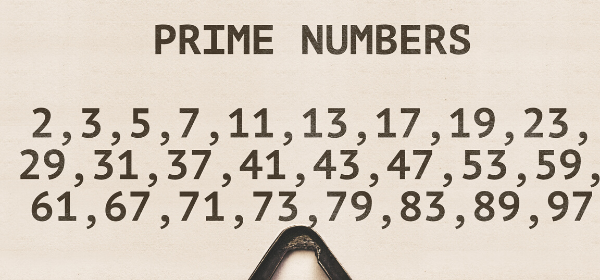This blog notes down all key concepts and properties to remember to be able to infer and use for prime number-related problems. Many GMAT Data Sufficiency problems will need the know-how of the properties so we can infer if sufficient information is available or not. GMAT prime numbers section is among the tricky part of the Quants.
Prime Numbers Rules
- Number 1: 1 is not a prime number. This is just to clarify in case, we need to count etc. So, 2 is the smallest prime number.
- Divisibility: A prime number is only divisible by two distinct positive integers 1 and the number itself. A number is not prime if it’s divisible by any other positive integer.
- Odd/Even: All positive integers other 2 are odd by default. Also, this property is useful to know that sum of two odds is even, so is the difference. The multiplication is not prime either since both divide the number. The division is not possible.
- Representation: All prime numbers other than 2 and 3 can be represented as 6n-1 and 6n+1, where n is a positive integer. A number representable as 6n-1/6n+1 is not necessarily a prime number.
- Goldbach Conjecture: Any number other than 2 can be represented as a sum of two prime numbers.
- Consecutive Numbers: 2 and 3 are only numbers that are consecutive integers and prime. This is not necessarily true the other way around where 5 and 7 are prime but not consecutive integers.
Is A Number Prime or Not ?
One of the ways to check if a number is prime or not is to compute the closest square root of the number and jot down all prime numbers until then. If the number is divisible by any of the prime numbers till then. The number then is not prime.
e.g. 371, closest square root is sqrt(361) = 19. We can try dividing 371 with numbers from 2,3,5,7,11,13,17. If it’s divisible by any, it’s not a prime else it’s a prime number. The number indeed is divisible by 7, so not prime.
But to speed up the process, we can try seeing if we can represent the number as 6n-1 or 6n+1. If not, we definitely know they are not prime and eliminate those answer choices. For those, which are valid, we need to confirm with the square root approach above. A number representable as 6n-1/6n+1 gives remainder as 5 or 1 on being divided by 6.
371 in the above example gives a remainder as 5, so we went ahead and tried to divide it by different numbers.
Composite Concepts
- Multiples: A multiple is a number derived by multiplying the number a positive integer. This positive integer can go from 1 and beyond. Thereby, the number itself is also multiple.
- Factor: A factor is a number that divides the number, it is the factor of. eg. 2 is a factor of 20 and 20 is a multiple of 2.
- A^2-B^2: A^2-B^2 can be written as (A+B)*(A-B).
To be continued …

